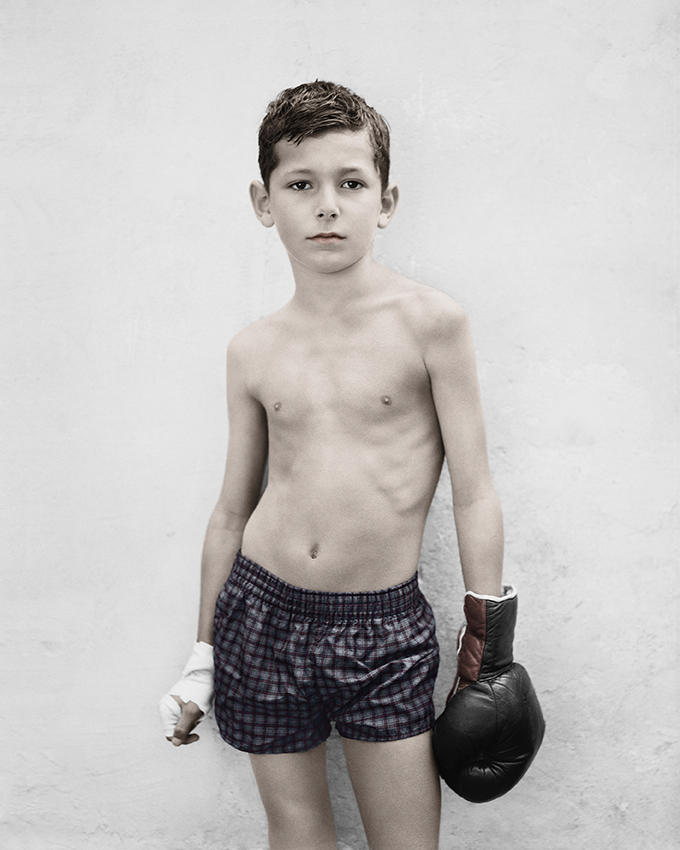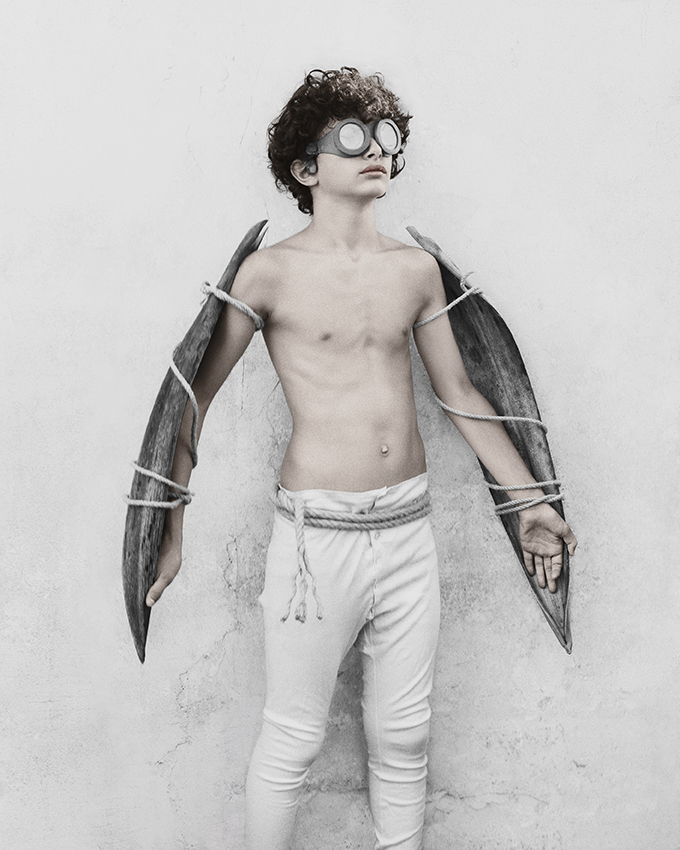France Week: Vee Speers
I originally met the ebullient Vee Speers as she signed books for her newly released series “The Birthday Party” at Jackson Fine Art’s booth at Paris Photo in 2008. We chatted briefly as I admired the delightful images from the series (and which I wish I had purchased one at the time…heavy sigh!). A few months later another collector and friend of mine in Paris mentioned that she wanted to visit Vee’s studio…would I care to join her? I leapt at the chance and the ever-hospitable Vee invited us to dinner at their apartment/atelier in central Paris. That was the beginning of a long friendship that has spanned more than a decade as I have continued to admire and collect the exciting output of this talented artist.
Vee Speers is a Paris-based Australian artist who fell in love with photography in the 70’s while assisting her father in his converted caravan darkroom and was mesmerized by seeing his portraits appear like magic. Following art school in Brisbane in the 80’s, Speers worked as a Stills Photographer for ABC Television in Sydney. In 1990, a short stay in France became a permanent move to Paris, which according to her is a place with “unlimited potential and endless creative inspiration”. By the end of the 90’s, Speers’ path was being forged as a photo artist, and since then she has been an engaging viewer around the world with the dramatic tension of her story telling through portraiture. Speers has exhibited in museums, galleries, art-fairs and festivals around the world, and her work has been published in features and covers of more than 30 international magazines, with 4 sold-out monographs of her work. Her work has been acquired by the Sir Elton John Collection, Michael Wilson Collection, Hoffman Collection U.S., Carter Potash Collection, Morten Viskum Collection, Alan Siegel, Lawrence Schiller, DZ Bank, the Museum of Fine Arts Houston, Museum 21C, Kentucky, the George Eastman House, and Hudson Bay Company Art Fund among others. Jackson Fine Art Gallery of Atlanta, GA represents her (www.jacksonfineart.com).
Phoenix
“Phoenix” is my new work about the renaissance of women, inspired by the many obstacles women have been through and overcome and the challenges we have to face through this transformation. I come from an all-girl family, as well as having three daughters, so for me this is a completely natural subject, one that I have wanted to explore for some time. The mood I have created is partly inspired by the Victorian period when women were “anonymous” and had no voice. I have set richly detailed portraits against a backdrop from “mother nature” and have introduced still life and landscape to complete the story. Phoenix also portrays a sense of grieving for nature and our planet and the world we live in. – Vee Spears
How would you define yourself as a photographer?
I don’t really fit the classic description of a photographer. Rather, I use photography as a tool to tell stories. I am too much of a perfectionist and often rebellious in my approach, and I enjoy challenges and taking risks. Even though my images are set in a studio and the scenes are built from scratch I don’t like fake emotion from the model, so my main focus is to create an image that is believable, and evokes an emotion that feels real. My work always has an underlying tension which may either be diffused or accentuated by my aesthetic approach.
Your previous work has centered upon childhood, adolescence, immortality/mortality and the demi-monde of Paris. Where are you taking us with your new work?
My work generally is a reflection of life as I observe it. My most iconic work “The Birthday Party” was centered on the playful yet anarchistic world of childhood, capturing the last days of innocence. This series was inspired by my youngest daughter when she was just 8 years old and her friends, but I also drew on my own unique childhood in Australia for ideas and references.
Six years later I photographed “Bulletproof” with the same children from “The Birthday Party” as they transformed and faced the challenges of adolescence. (My 3 daughters were at this time all adolescents). “Dystopia” is the third part of the trilogy of these characters playing out roles from life’s battles. It depicts their metamorphosis to adulthood and is set against the backdrop of a world that has come unhinged.
“Phoenix” is my new work about the renaissance of women, inspired by the many obstacles women have been through and overcome, and the challenges we have to face through this transformation. I come from an all-girl family, as well as having three daughters, so for me this is a completely natural subject, one that I have wanted to explore for some time. The mood I have created is partly inspired by the Victorian period when women were ‘anonymous’ and had no voice. I have set richly detailed portraits against a backdrop from ‘mother nature’, and introduced still life and landscape to complete the story. “Phoenix” also portrays a sense of grieving for nature and our planet and the world we live in.
What process do you employ in coming up with project ideas?
There are no secrets to finding a new idea. It’s a process of letting go, and being receptive to an idea that seems to come from nowhere but in fact comes from within.
What obstacles or constraints do you encounter as you develop a project?
My biggest challenge is to define a concept beforehand so that a common thread runs through all the images in the series. However, I mostly begin shooting with a small idea and no clear concept, and then the story takes shape as I go along.
Who are your muses and your influences?
My muses have been my family and friends. My influences have come mostly from cinema and great directors with their wild and untamed ideas, such as David Lynch and Tim Burton.
How do you normally promote your work here in France and internationally?
Today, I promote my work through galleries, museums and publications. I have published four books, and my work has been on many different magazine covers, so I am seen by a very wide audience. Instagram is also a fantastic way to personalize the way I reach out. For people starting out in art photography, I think it is important for them to attend the big photography festivals and present their work in person to as many different people from the industry as possible. Being able communicate clearly an idea is vital, and the feedback and critique is invaluable. The festivals are also a way of meeting other artists working on their own, each with their own style.
Who do you consider your primary audience?
I can’t really know who my primary audience is, as my work has been well received around the world in many different cultures. I do however think that younger audiences find my work very appealing, as there is enough madness and chaos to spark their interest through props and costume. At the same time the images are timeless and aesthetically appealing.
Posts on Lenscratch may not be reproduced without the permission of the Lenscratch staff and the photographer.
Recommended
-
Salua Ares: Absense as FormNovember 29th, 2025
-
Ricardo Miguel Hernández: When the memory turns to dust and Beyond PainNovember 28th, 2025
-
Pamela Landau Connolly: Columbus DriveNovember 26th, 2025
-
KELIY ANDERSON-STALEY: Wilderness No longer at the Edge of ThingsNovember 19th, 2025
-
Jackie Mulder: Thought TrailsNovember 18th, 2025







































































